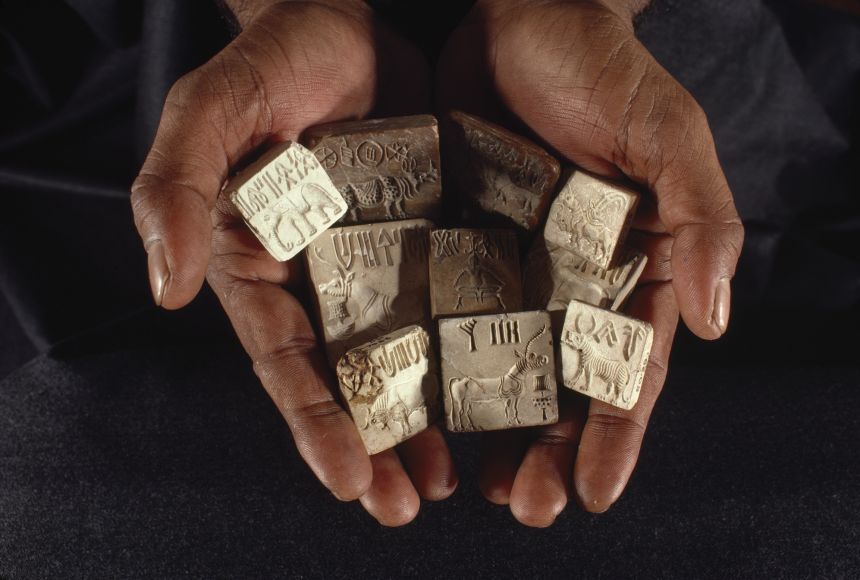The earliest human cities were created more than 5,000 years ago. Archaeologists and historians have wondered what life was like for these early city-dwellers. Thanks to modern technology, scientific explorers have uncovered answers. By looking at the Indus Valley civilization, we can understand many aspects of life in early cities.
Between 3,000 and 5,000 Years ago
The Indus Valley civilization was one of the world's first civilizations. It is also known as the Harappan civilization. The Harappan civilization existed from around 3300 to 1700 B.C.E. This meant it began around 5,320 years ago and ended about 3,720 years ago. At the same time, civilizations were thriving in Mesopotamia, Egypt, and China. The Harappan civilization was located is now in South Asia, in the countries of Pakistan and northwest India.
Although the Harappans had a written language, scholars cannot read it. Most of what is known about Harappans' culture and civilization comes from the ruins of their two largest cities: Harappa and Mohenjo-daro. Both cities cover less than 2.6 square kilometers or one square mile. The city itself was only a little smaller than Central Park in New York City, United States. The cities had an estimated population of around 40,000 people each.
The Harappan cities did not have palaces or temples, and there is no evidence that they were ruled by kings and queens. Harappans may have chosen rulers in elections.
Cities on a Grid with a Mound
The cities were located about 644 kilometers, or 400 miles, apart. That's slightly greater than the distance between Los Angeles and San Francisco. The two cities were similar in design. Each city was built along a grid, comparable to modern cities like Chicago. One section of every city held public buildings in a citadel mound complex. Cities also had a lower town where housing was located.
The citadel mound complex at Mohenjo-daro included the Great Bath, a granary where grains and food were stored, houses, and government buildings. Brick towers and a wall protected the complex. People probably used the Great Bath for ritual bathing. Bathing may have been part of Harappan religious events.
Harappan cities had advanced systems for supplying water and removing waste. In Mohenjo-daro, about 700 wells provided water. Most houses in the lower town had private bathrooms, and many had wells. Bathrooms were usually placed against the outside wall of a house. This allowed waste to travel from baths and toilets into underground sewers.
Harappan houses were built from sun-dried bricks. Some houses had only one room each while others were much larger. The lower town held workshops where craftspeople, who made things like clothing or clay pots, worked.
Grains like wheat, barley, and rice were staples of the Harappan diet. The Harappans also grew and ate a variety of vegetables and fruits. Cattle, chickens, and other animals, including some wild animals, provided meat.
Skilled, Artful People
Harappans created pots, bowls, and other containers from clay. These were used for cooking and storing food. Some pottery was handmade, but others were crafted using a potter's wheel. The Harappans also made plates from copper, bronze, and other metals. These artifacts reveal that Harappans were skilled metal-workers.
One of the most important discoveries from Mohenjo-daro is a 10-centimeter (four-inch)-tall bronze sculpture of a dancing girl. The sculpture is significant because it shows that Harappans danced. Dance may have been a form of art, or simply a way for people to entertain themselves.
Merchant seals are among the most common Harappan artifacts. These were symbols or markers to represent a seller. The seals had images of animals or other decorations. They were likely used by merchants, or sellers, for sending and receiving packages. The seal's mark proved that the package was sent by a particular merchant. One famous seal depicts a god called Pashupati. This god has some similarities to the Hindu god Shiva, who is known as "The Destroyer."
Some Indus Valley seals have been found in Mesopotamia. This suggests that Harappans traded with other civilizations in South Asia and the Middle East. The Harappan civilization was one of the first to develop a system for weighing and measuring objects.
Explorers continue to learn more about the Harappan civilization. Artifacts are displayed in museums, such as the National Museum in New Delhi, India, and others.

